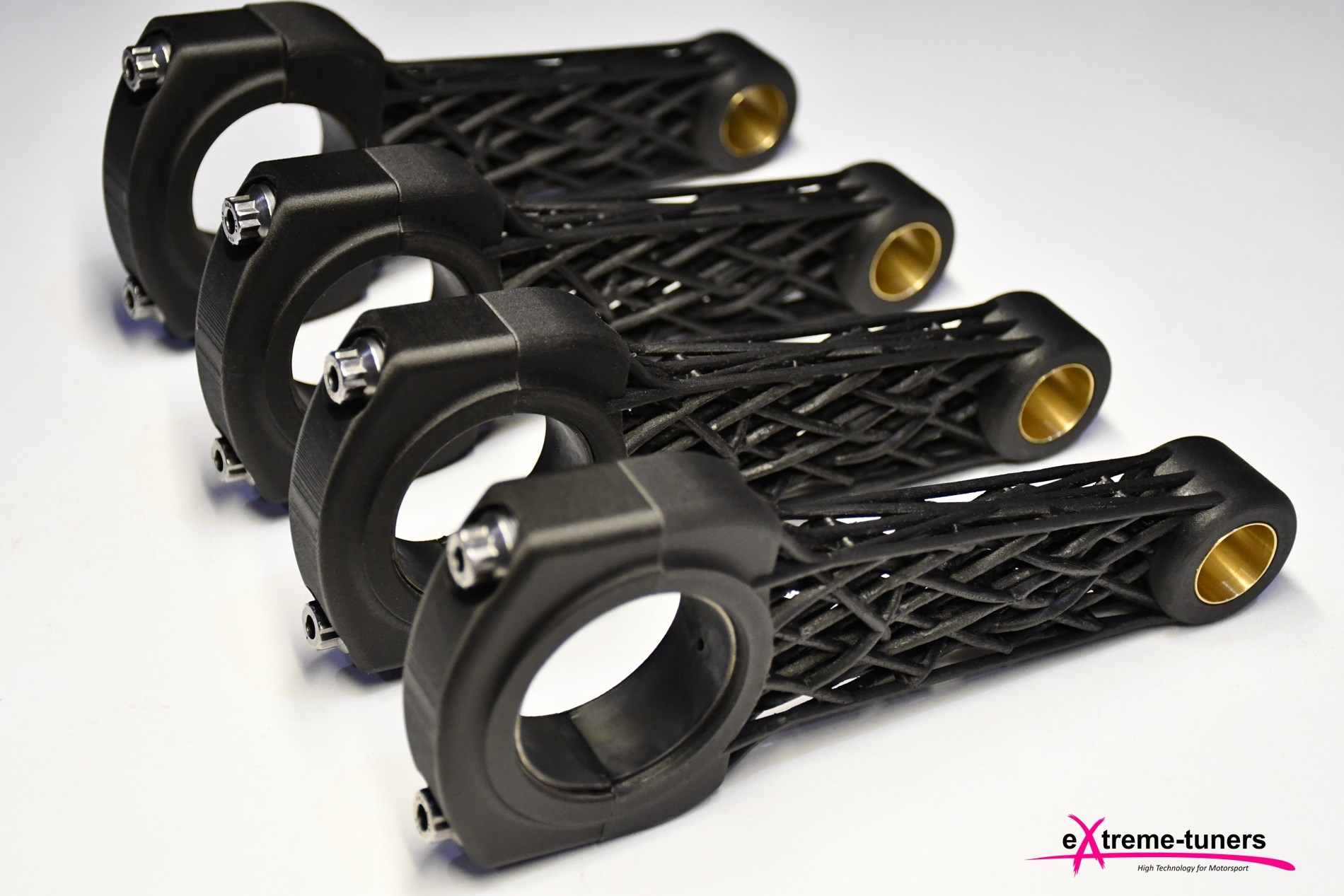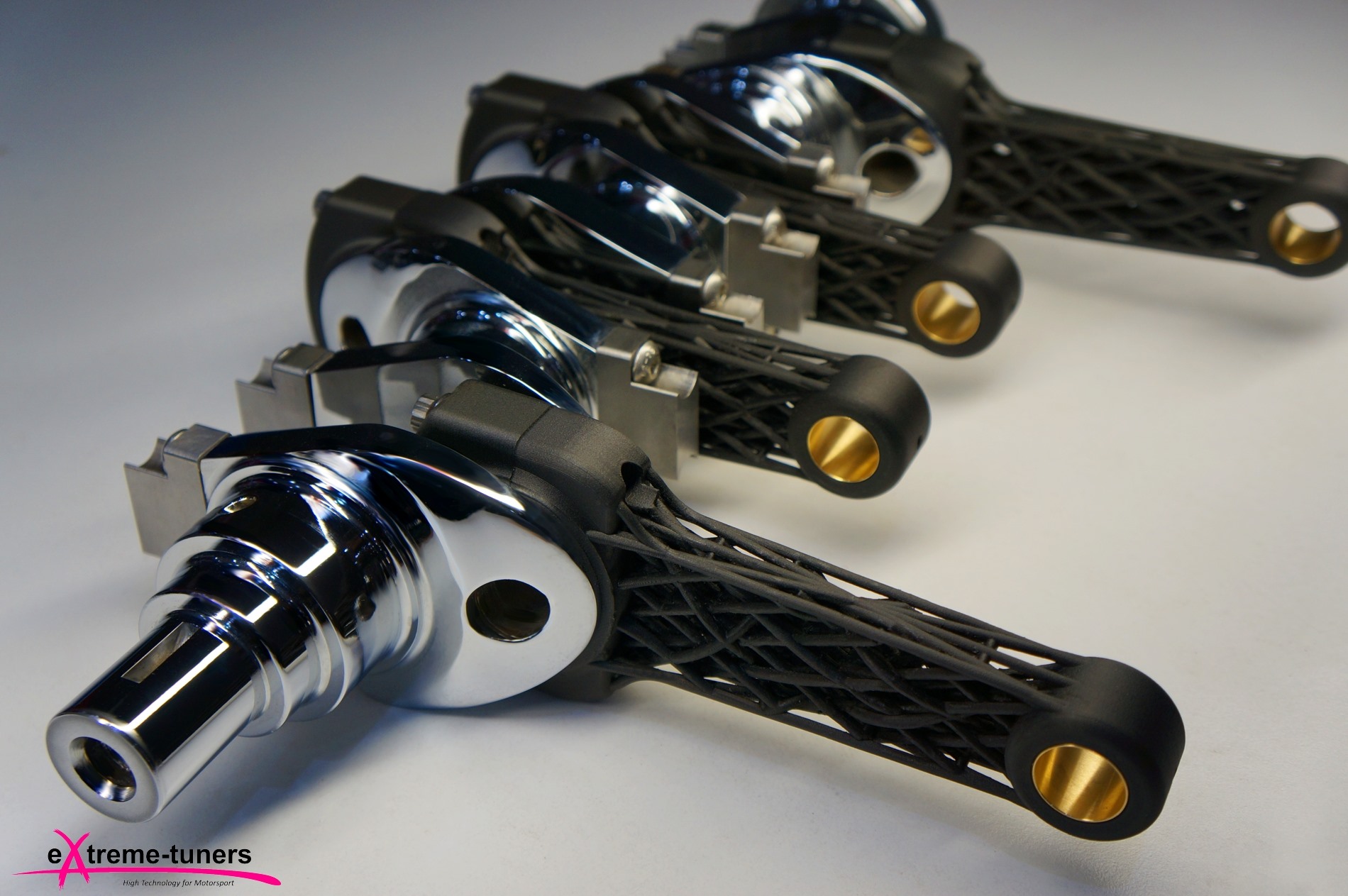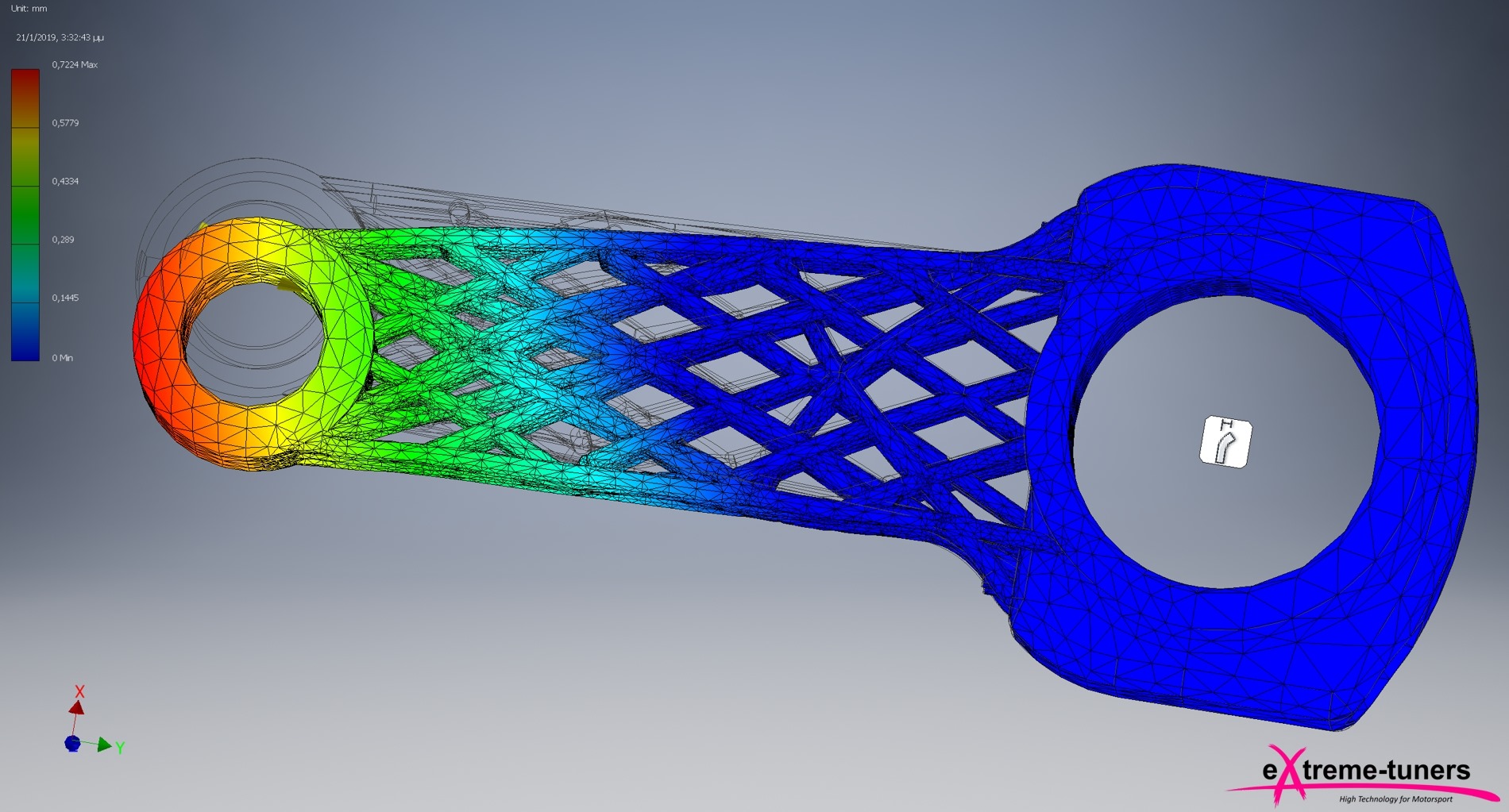Extreme Tuners, a machine shop based in Athens, Greece, has created 3D printed carbon composite connector rods for the Mitsubishi Lancer Evolution car. According to the company, the rods weigh 10 times less than steel and 6.5 times less than aluminum, while withstanding up to 3000 horsepower (HP) and approximately 15,000 RPM.
“As nothing [is] available on the market for engine parts, we design and build our engine parts, pistons, rods crankshafts, and any other high-efficiency engine component,” states Extreme Tuners.

3D printed carbon composite connector rods
Carbon composite materials have been used in the automotive sector for cost-efficient tooling, as well as end-use car parts such as a 3D printed suspension upright and a 3D printed duct fitting. Extreme Tuners sought to leverage carbon composites to develop lighter, stronger and more heat resistant connector rods to be potentially used within carbon-ceramic brakes.
As internal combustion engine components, connector rods transfer motion from the piston to the crankshaft which then converts linear energy into rotational energy, enabling a vehicle’s wheels to drive the car forward. Connector rods are commonly made from aluminum alloy and can be heavy and stiff despite the component’s strength. This can hinder the car’s performance.

Accelerating additive manufacturing in automotive parts
Using topology optimization, the 3D printed connector rods were designed and tested under the following criteria: 2916HP, 15,000 RPM, 37.2m/sec, and 57,363 pistons force. The company state that a bend of 0.5779mm on the small end was apparent, which is in an “acceptable limit comparing to our working time.”
The rods are also said to be less time-consuming to produce, and less likely to overheat. Extreme Tuners is now developing ceramic pistons and new ceramic rods to further address heating dissipation.

For more of the latest additive manufacturing applications news subscribe to the 3D Printing Industry newsletter, follow us on Twitter and like us on Facebook. Seeking jobs in additive manufacturing? Make your profile on 3D Printing Jobs, or advertise to find experts in your area.
Featured image shows 3D printed carbon composite connector rods. Photo via Extreme Tuners.

